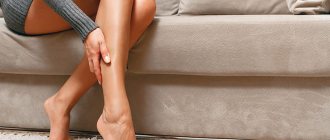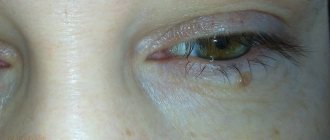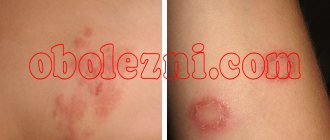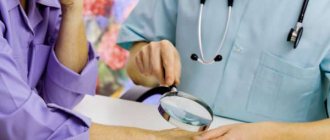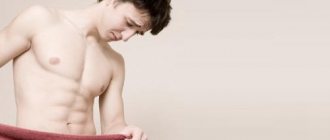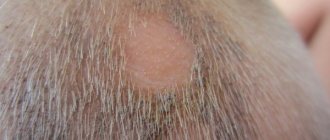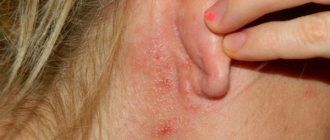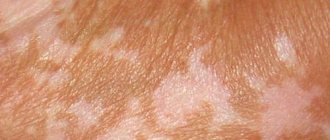They are classified depending on the pathogen, location and degree of damage to the skin. According to WHO statistics, more than 70% of children are affected by this skin disease, both in newborns and older.
The group of lichens includes:
- lichen Zhibera or pink lichen;
- ringworm (the most common form);
- shingles;
- lichen planus or Wilson's lichen;
- ringworm or eczema;
- lichen simplex of the face;
- scaly lichen or psoriasis;
- pityriasis versicolor.
The mechanism of infection has not been reliably identified, since not every child who comes into contact with a carrier of the pathology gets lichen.
There are a number of catalyst factors that increase the likelihood of developing the disease, including:
- genetic predisposition;
- diseases of the digestive tract;
- endocrinological dysfunctions;
- autoimmune pathologies;
- hyperfunction of the sweat and sebaceous glands;
- stress;
- physical stress;
- hypothermia of the body;
- taking certain medications, etc.
Late detection of a lichen spot often leads to an increasingly larger area of skin being affected, causing itching, peeling and discomfort. Often children scratch and injure the affected areas of the skin, which contributes to the addition of a bacterial infection to the underlying disease.
In order to identify and remove lichen from a child’s skin, you need to contact a specialist. A doctor whose competence is the diagnosis and treatment of lichen in children is a pediatric dermatologist.
In addition to treatment, prevention is important in eliminating and preventing relapse of the disease.
Preventive measures for the primary or recurrence of lichen are:
- strengthening the child’s immunity (hardening, etc.);
- compliance with hygiene standards (washing hands, cleaning premises with disinfectants, etc.);
- separate individual items (bed and personal linen, dishes, toys, etc.);
- frequent washing of the child’s clothes, especially after contact with animals or sick people;
- showering rather than bathing to avoid the spread of infection;
- replacing synthetic clothing with natural ones;
- reducing exposure to the sun (heat provokes the growth of fungal colonies), etc.
What does ringworm look like?
If you look at a photo of lichen in children, you will notice that it has the same appearance as in adults. Often simply in a weaker reaction. This means that the reasons for its appearance are absolutely the same as in adults.
Most often, lichen is presented in the form of round spots on the body, the skin on which dries out and begins to peel off severely. They can reach five centimeters in diameter, and the process is often accompanied by irritating sensations, such as itching or even mild pain.
Ringworm most severely affects exposed parts of the body, such as the lower back, abdomen, hips, shoulders, chest, back, and arms.
Varieties
There are several types of lichen versicolor in humans:
- invert – characterized by the formation of spots in the skin folds, occurs without signs of inflammation;
- erythematous-squamous - spots appear on different parts of the body, come in different sizes, occur without inflammatory processes;
- follicular - the most severe type of disease, accompanied by spots with ulcers that itch and cause discomfort, occurs with an inflammatory process.
Ringworm on the face
It is especially difficult for a child to experience the appearance of lichen on the surface of the face. This is often accompanied by severe stress and constant psychological pressure caused by flaws in appearance, even if temporary. At this time, you need to understand not only how to identify lichen in a child, but also how to communicate with him at this time.
It is important to explain that there is nothing wrong with this, and that the skin defect will pass, and therefore there is no need to feel worse than the children around you.
The psychological state plays an important role, because under the influence of severe stress the child’s immunity can weaken, which will only intensify the inflammatory reaction from lichen.
General recommendations
During therapeutic activities, it is important to adhere to certain recommendations:
- towels and bed linen must be washed in boiling water;
- After washing, it is necessary to iron the laundry on both sides;
- wet cleaning should be done every day;
- Hygienic items should be thoroughly processed under boiling water and soap.
Despite the fact that there are cases of cure under sunbathing, ultraviolet rays have a negative effect on this disease. Therefore, deliberate sunbathing is not recommended.
After the course of therapy, patients are recommended to adhere to a certain diet. The diet should include fresh vegetables, herbs, and fruits. This will help enrich the body with vitamins and strengthen the immune system. To avoid relapse, it is advisable to take 1 antifungal tablet monthly.
Causes of lichen
To understand how and how to treat lichen for children, you need to understand the sources of the problem. Ringworm appears as a result of a certain type of virus coming into contact with the skin.
This happens from the simplest contact, direct or indirect. You can get infected not only from other people, but also from animals.
Particularly dangerous in this regard are stray animals that do not have medical supervision and care. Among them, lichen spreads quite quickly, which is why many people, including children, can become infected.
Weak immunity can cause infection. In many cases, minimal contact may not pose a threat because the body's immune system quickly copes with the virus. After a cold or serious illness, a child’s body can become very weak, making him more susceptible to external threats.
Here you can add allergies, increased sweating during hot periods of the year, physical damage to the upper layers of the skin and much more.
Disease prevention
It is easier to avoid the unpleasant phenomena of versicolor versicolor than to waste time, effort and money on eliminating them in the future. Therefore, it is useful to incorporate the following preventative measures into your daily routine:
- It is necessary to avoid visiting public baths and swimming pools; otherwise, always thoroughly cleanse the skin.
- Before going to the beach, get sunscreen.
- Be sure to have personal hygiene products that no one else should use.
- Carry out daily cleaning of the premises, not forgetting about ventilation.
- Hardening yourself will strengthen your immune system, which will allow you to resist many viral, infectious and fungal irritants.
- Iron things on both sides: high temperatures kill pathogenic organisms.
- Replace bad habits with moderate exercise and healthy eating.
Types of lichen
If you suspect lichen in a child, you should consult a dermatologist as soon as possible. He will be able to give you good advice on how to properly treat lichen, immediately after he determines its type and cause.
There are six common types of lichen - ringworm, vermilion, tinea versicolor, versicolor, pink and scaly.
All these types have a number of features, which consist both in appearance and in the symptoms that accompany them. In addition, the type of treatment may differ, as well as medications and ointments for lichen. Next, we will look at some of the most frequently encountered types in a little more detail.
Pityriasis rosea
This lichen received its second name in honor of Gibert, the Frenchman who discovered it. It poses a threat to children aged five to twelve years. It is considered quite dangerous because it is very easily and quickly transmitted between children.
First, a small pink spot appears and begins to peel off. After this, a rash begins to appear around him, which spreads in all directions. This is accompanied by quite severe itching, due to which children often scratch the affected areas until they bleed, which is very dangerous.
Diagnostics
The diagnosis of “lichen versicolor” is established by a dermatologist after examining the patient. Diagnostic measures include collecting anamnesis, studying the patient’s complaints, and examining a sample of material.
If doubt arises when making a diagnosis, additional tests are performed:
- Balzer test - the affected areas and the surrounding area are smeared with iodine solution; in the presence of a fungus, the stratum corneum is loosened, which leads to more intense staining, in contrast to healthy skin;
- identification of Beignet's symptom - the edge of a glass slide is passed over the affected area, as a result of which small chips are peeled off;
- exposure to a Wood's lamp - for testing, a mercury-quartz lamp is used, the light of which is passed through a glass filter, which ultimately leads to fluorescence in the cells of the fungus (yellowish-brown glow).
Microscopy results obtained from scales also help to establish a diagnosis. For the test, the doctor scrapes the skin with a glass slide, after which scales are collected on it, which are soaked in a weak alkaline solution for further examination under a microscope.
Before treatment, the patient is prescribed several more tests that help determine the cause of the pathology:
- general blood test to assess the general condition of the body;
- determination of glucose levels, which helps to establish a violation of carbohydrate metabolism;
- biochemical blood test to determine chronic diseases;
- Blood ELISA to determine HIV infection.
If the exact cause of the disease is established, treating it becomes much easier and faster.
Ringworm
It got this name for a reason, because most often it appears in the hair on the head. As soon as you discover it, you must immediately begin to think about how to quickly and easily cure this type of lichen for your child. A timely response is important.
The fact is that if you don’t pay attention to it and neglect it a little, you can lose some of the hair on your head until the problem is fixed.
The source is a fungus that undergoes an incubation period in the body for two weeks. After this, the first symptoms begin to appear on the scalp, arms, torso and other parts of the body.
At this time, the skin gradually begins to peel off, which eventually turns into an active state. It is often transmitted from animals suffering from this lichen.
Local agents
Ointments used against the fungus that causes pityriasis versicolor act directly on the pathogen and help inhibit its activity. The following medications are used:
- Mycoket, Dermazol based on ketoconazole;
- Kanizon, Amiklon based on clotrimazole;
- Ifenek, Ecodax on econazole;
- Daktarin, Micozone based on miconazole;
- Mikoderil, Exoderil with naftifine and others.
Listed above are only some external medications used in the treatment of this disease. In fact, there are many more of them.
Ointments soften the skin and help dead skin cells to separate. In addition to the above drugs, dermatologists often prescribe the following drugs:
- salicylic ointment 5%;
- tar-based chatter;
- glycolic acid in the form of a 5−10% solution;
- salicylic or resorcinol alcohol 5% or a combination thereof.
External medications are prescribed after examining the patient.
Alternative Treatment
We all know that there are many folk remedies and recipes for lichen that our ancestors actively practiced. However, it is worth understanding that in this case we are talking about the health of the child. In such a situation, it is better to contact a dermatologist in a timely manner, who will prescribe the correct treatment and rehabilitation.
Folk remedies
In addition to medications, therapy can be carried out using traditional medicine. The following recipes are used:
- with hellebore water made from hellebore roots, wipe the affected areas of the body in the morning and evening for a week (the product is dangerous, so it is necessary to wash your hands with soap after using it);
- The juice is squeezed out of onions through gauze, and then the stains are treated with it several times a day;
- two tablespoons of St. John's wort herb are infused in a glass of boiling water, and then the affected areas are wiped with this infusion three times a day.
Before using any of the recipes, you should consult your doctor. Traditional medicine is not used as the main treatment because it is not able to eliminate the activity of the fungus. They can be a good addition to drug therapy.
